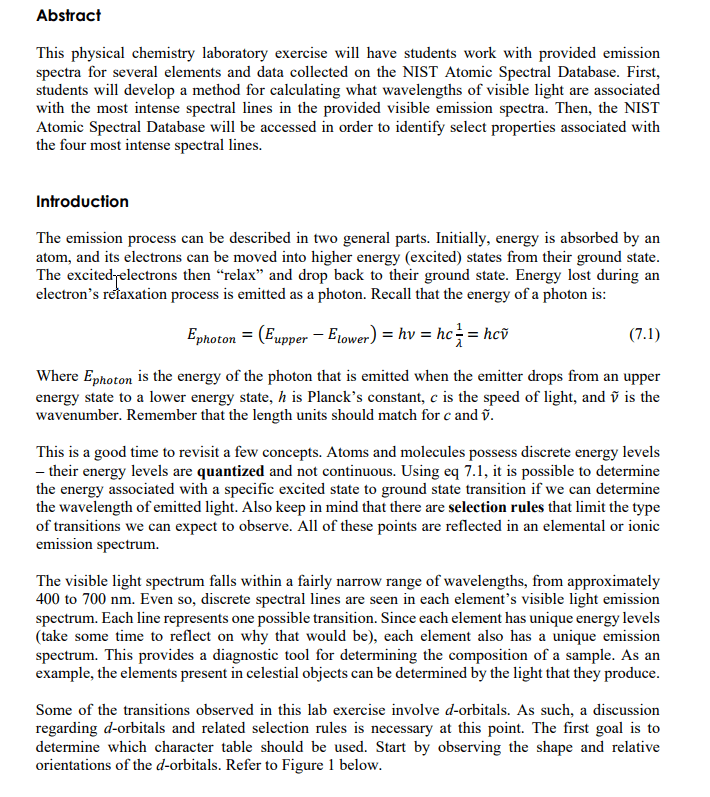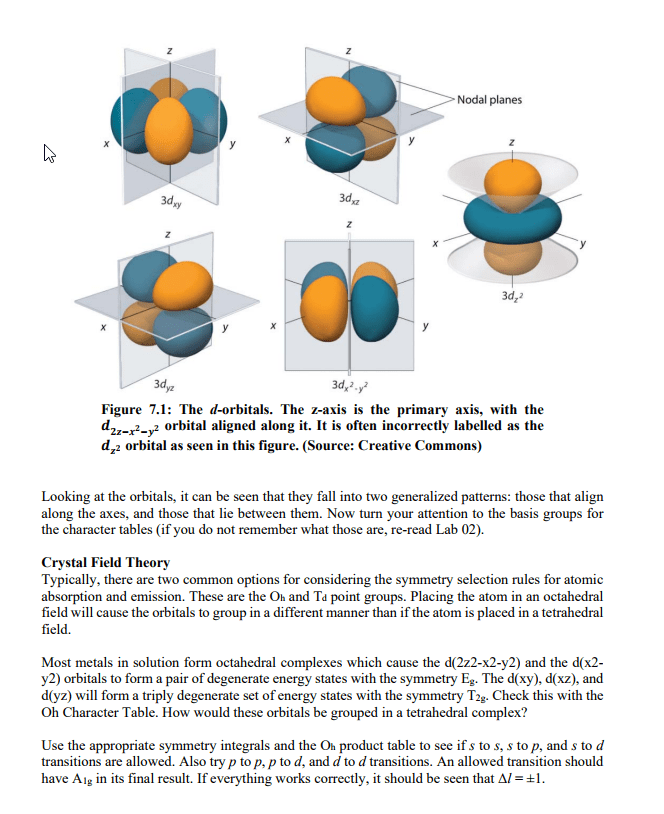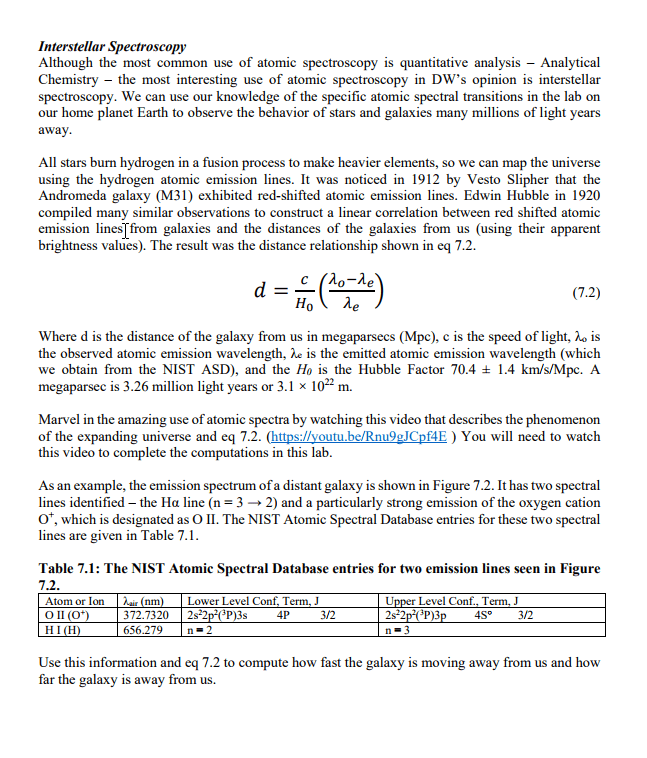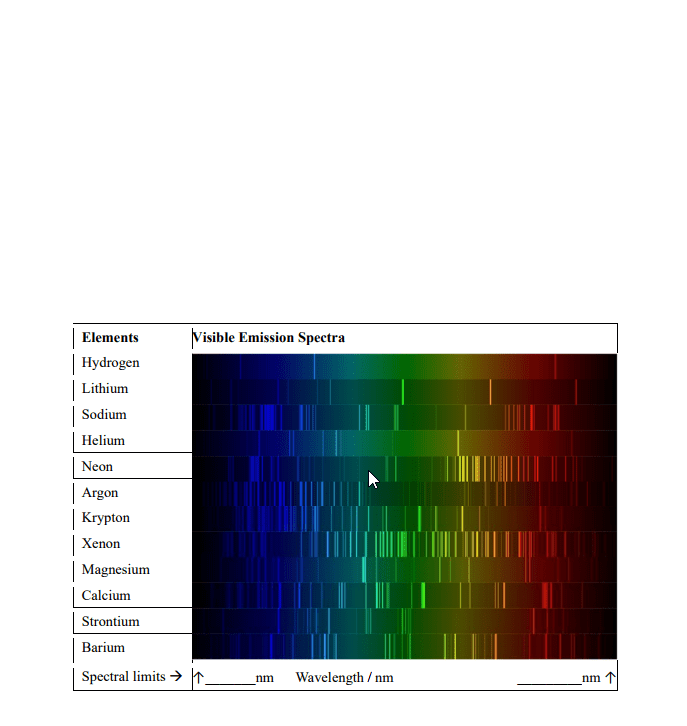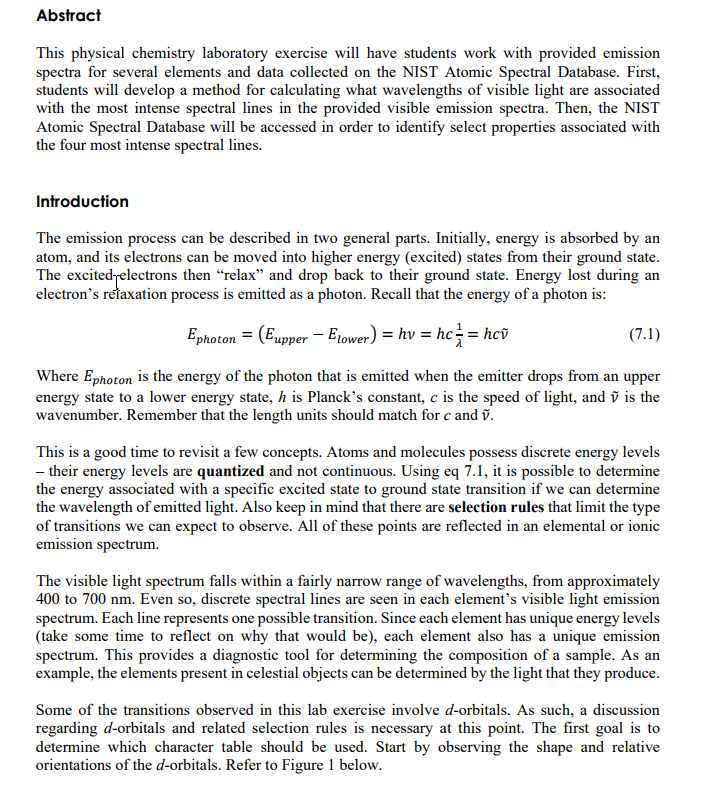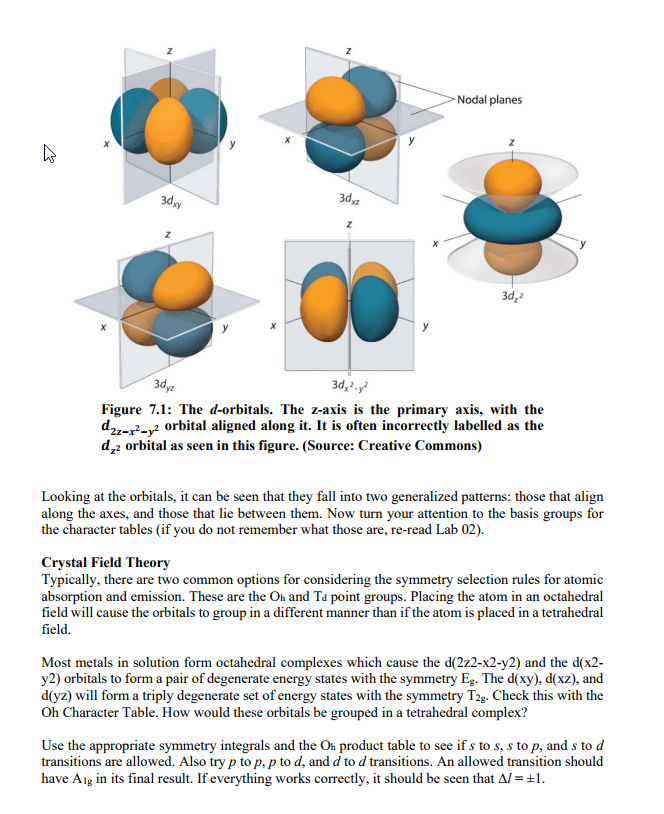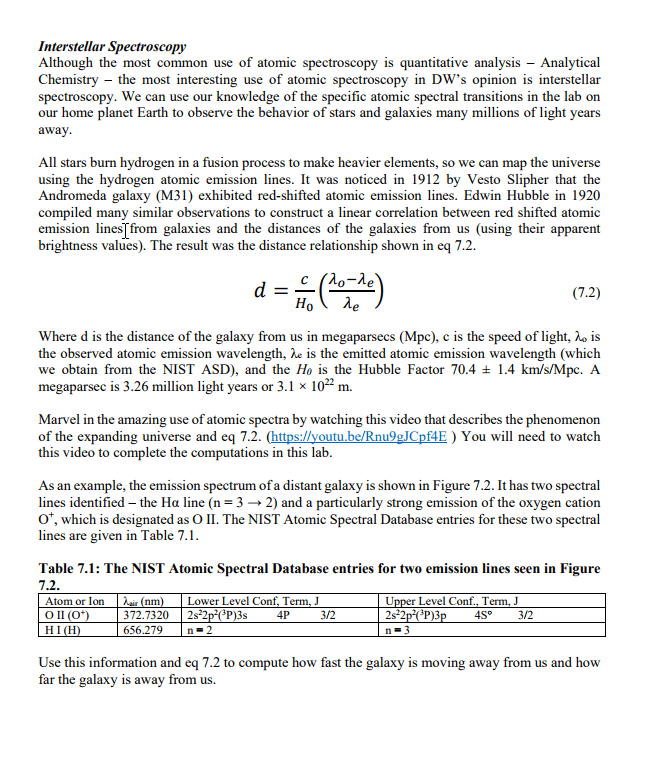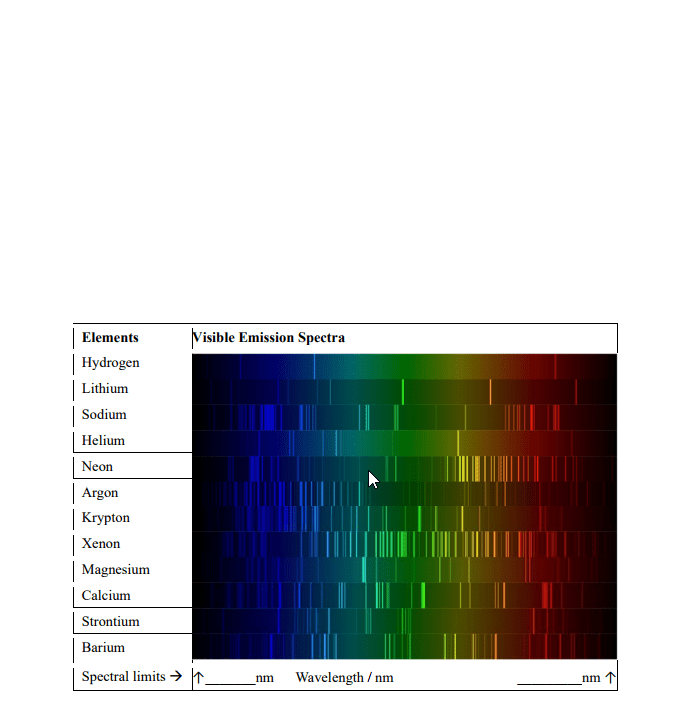he Aurora Borealis is caused by emission in the upper atmosphere from atoms, molecules, and ions excited by high energy particles originating from the sun. One of the strongest emissions is due to a single extremely narrow wavelength (557.7 nm) from very energetic oxygen atoms decaying to a lower, but still excited energy level. The transition is 1S to 1D and is not allowed (âforbiddenâ) by the quantum selection rules for electric and magnetic dipole transitions. The consequences are a very low transition probability, slow decay and very narrow band radiation. The radiative lifetime of the excited atoms is about a second â an eternity by ordinary electronic transition standards. In that time, at normal pressures, many of the excited atoms lose their energy nonradiatively by collisions with other atoms and molecules. The green radiation is only possible in the near vacuum of the upper atmosphere where collisions are less frequent. Oxygen atoms are also responsible for red aurorae. If oxygenâs green radiation is emitted grudgingly, its red light is even more so. The radiation is from atoms at a lower excited state, the 1D state, decaying to the ground (3P). This transition is also forbidden; the radiative lifetime is an immense 110 seconds and the atoms only have a chance to radiate above 150 km. At lower altitudes their energy is lost in collisions. We only see aurorae because we are looking through tens to hundreds of kilometres of glowing gas. By sea level standards that âgasâ is actually a vacuum. At 100 km, the altitude of green aurorae, the atmosphere's pressure is a millionth of that at sea level and the mean distance an oxygen atom travels between collisions is about a meter. Even so, it undergoes about 500 collisions each second and most excitation is removed nonradiatively. Only a small fraction of the 1S oxygen atoms radiate but this is enough to be observed. At 200 km, where the red oxygen aurora glows, the pressure is even lower. An oxygen atom will travel on average 4 to 5 kilometers between collisions and will be hit on average only once every 7 seconds. Even oxygen atoms in the 1D state have enough time to radiate their energy, and their collective light over a layer perhaps tens of kilometers thick gives us the soft and elusive auroral glow. Lights in a vacuum.. ..almost!
a) What are the possible term symbols for a p2 configuration?
b) Explain why the two transitions discussed above are forbidden: 1S --> 1D and 1D --> 3P (Which selection rules given in Eq. 9.46 are disobeyed?)
c) Draw a rough energy level diagram using the information in the table. Use arrows to show the transitions described above and calculate the transition wavenumber and wavelength. Do your results explain the colors observed in the Aurora Borealis?
State
/cm-1
3P2
0
3P1
158.265
3P0
226.977
1D2
15867.862
1S0
33792.583
he Aurora Borealis is caused by emission in the upper atmosphere from atoms, molecules, and ions excited by high energy particles originating from the sun. One of the strongest emissions is due to a single extremely narrow wavelength (557.7 nm) from very energetic oxygen atoms decaying to a lower, but still excited energy level. The transition is 1S to 1D and is not allowed (âforbiddenâ) by the quantum selection rules for electric and magnetic dipole transitions. The consequences are a very low transition probability, slow decay and very narrow band radiation. The radiative lifetime of the excited atoms is about a second â an eternity by ordinary electronic transition standards. In that time, at normal pressures, many of the excited atoms lose their energy nonradiatively by collisions with other atoms and molecules. The green radiation is only possible in the near vacuum of the upper atmosphere where collisions are less frequent. Oxygen atoms are also responsible for red aurorae. If oxygenâs green radiation is emitted grudgingly, its red light is even more so. The radiation is from atoms at a lower excited state, the 1D state, decaying to the ground (3P). This transition is also forbidden; the radiative lifetime is an immense 110 seconds and the atoms only have a chance to radiate above 150 km. At lower altitudes their energy is lost in collisions. We only see aurorae because we are looking through tens to hundreds of kilometres of glowing gas. By sea level standards that âgasâ is actually a vacuum. At 100 km, the altitude of green aurorae, the atmosphere's pressure is a millionth of that at sea level and the mean distance an oxygen atom travels between collisions is about a meter. Even so, it undergoes about 500 collisions each second and most excitation is removed nonradiatively. Only a small fraction of the 1S oxygen atoms radiate but this is enough to be observed. At 200 km, where the red oxygen aurora glows, the pressure is even lower. An oxygen atom will travel on average 4 to 5 kilometers between collisions and will be hit on average only once every 7 seconds. Even oxygen atoms in the 1D state have enough time to radiate their energy, and their collective light over a layer perhaps tens of kilometers thick gives us the soft and elusive auroral glow. Lights in a vacuum.. ..almost!
a) What are the possible term symbols for a p2 configuration?
b) Explain why the two transitions discussed above are forbidden: 1S --> 1D and 1D --> 3P (Which selection rules given in Eq. 9.46 are disobeyed?)
c) Draw a rough energy level diagram using the information in the table. Use arrows to show the transitions described above and calculate the transition wavenumber and wavelength. Do your results explain the colors observed in the Aurora Borealis?
| State | /cm-1 |
| 3P2 | 0 |
| 3P1 | 158.265 |
| 3P0 | 226.977 |
| 1D2 | 15867.862 |
| 1S0 | 33792.583 |

